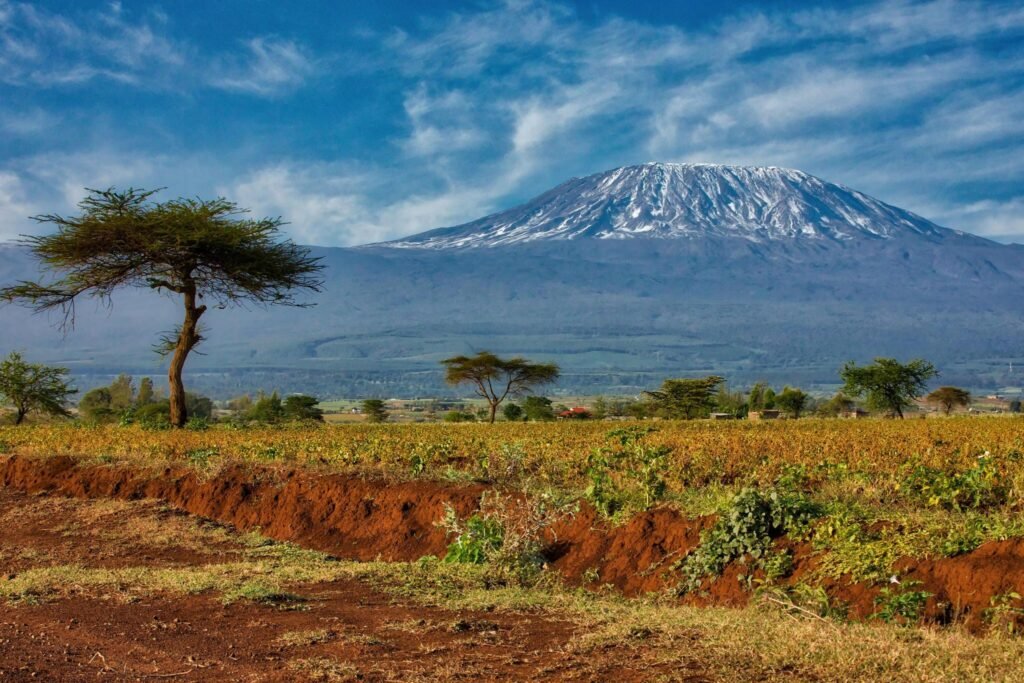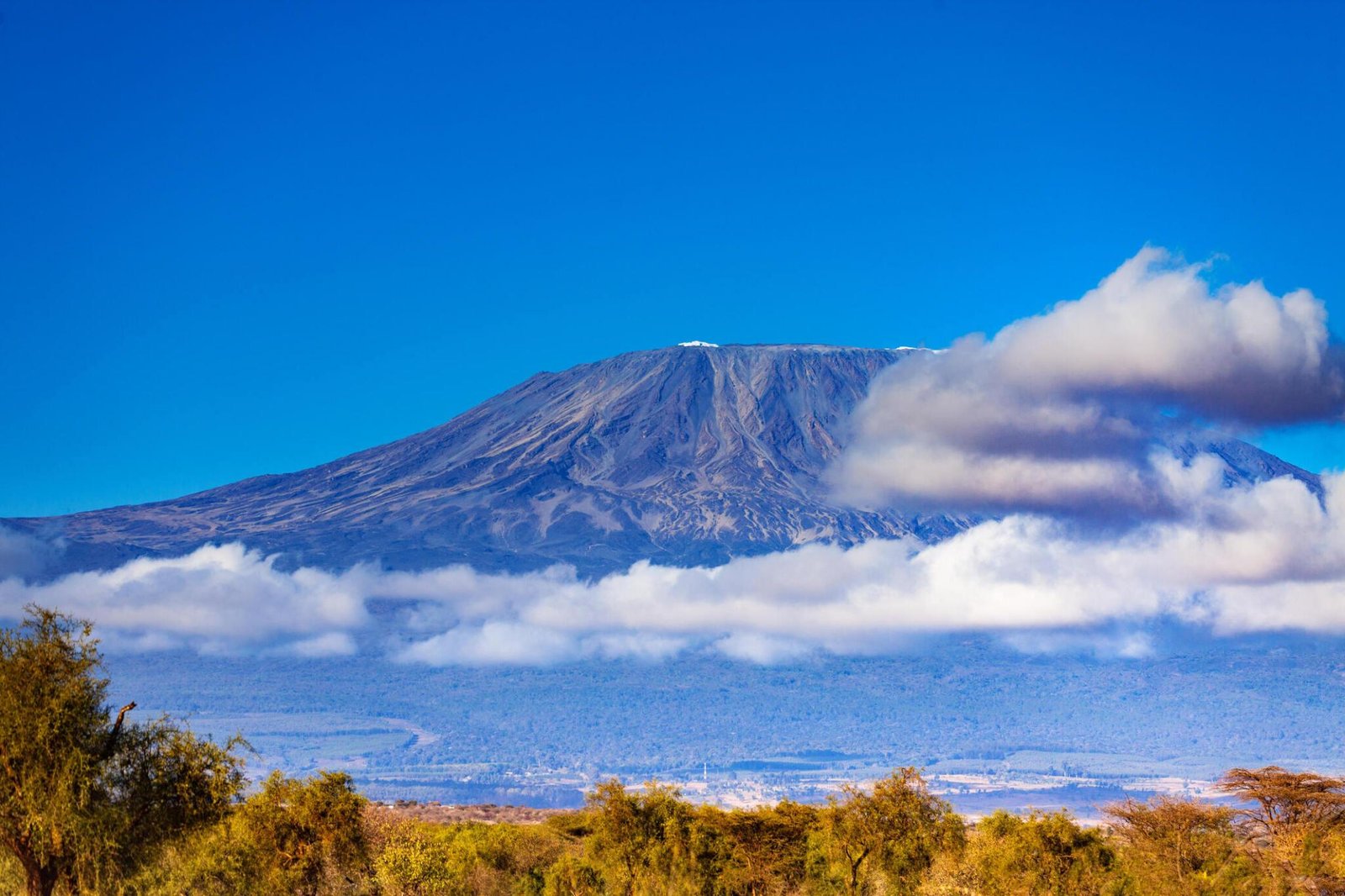Climbing Mount Kilimanjaro: Facts, Height & Maps
How High Is Mount Kilimanjaro? Top 10 Best Everything You Need To Know. Mount Kilimanjaro, located in Tanzania, is a majestic and awe-inspiring mountain that attracts adventurers and nature enthusiasts from around the world.
Rising proudly in the heart of Africa, this iconic peak stands as the tallest freestanding mountain on the continent and is a captivating destination for those seeking a challenging and unforgettable climbing experience how high is Mount Kilimanjaro.

In this comprehensive guide, we will delve into the depths of Kilimanjaro’s towering presence and provide you with everything you need to know about its impressive height and the incredible journey to its summit how high is Mount Kilimanjaro. Height and prominence of Kilimanjaro, and altitude gain when climbing it.
Understanding Mount Kilimanjaro’s Elevation
Mount Kilimanjaro reaches a staggering elevation of 5,895 meters (19,341 feet) above sea level.
It is a stratovolcano composed of three distinct volcanic cones: Kibo, Mawenzi, and Shira. Kibo, the highest and most well-known cone, is where the Uhuru Peak—the summit of Kilimanjaro—is situated.
The journey to this extraordinary point on Earth is both physically demanding and mentally rewarding, offering breathtaking panoramic views and a sense of achievement that will stay with you forever how high is Mount Kilimanjaro.
Kilimanjaro’s Height in Comparison
To grasp the magnitude of Mount Kilimanjaro’s elevation, it’s essential to compare it to other prominent mountains around the world.
Although its height may not compete with the towering giants of the Himalayas, Kilimanjaro’s allure lies in its accessibility and unique ecological diversity how high is Mount Kilimanjaro.
Unlike many other formidable peaks, climbers do not require technical mountaineering skills or equipment, making it an enticing prospect for adventurers of various experience levels.
Kilimanjaro vs. Everest
Mount Everest, the highest peak on Earth, stands at a towering height of 8,848 meters (29,029 feet).
While Kilimanjaro’s summit may be dwarfed in comparison, conquering this African giant still presents an incredible challenge and adventure how high is Mount Kilimanjaro.
Moreover, the relatively lower elevation of Kilimanjaro means that climbers can acclimatize more easily, reducing the risks associated with high-altitude sickness and increasing the chances of a successful ascent.
Kilimanjaro vs. the Seven Summits
The Seven Summits is a mountaineering challenge that involves scaling the highest peaks on each of the seven continents how high is Mount Kilimanjaro.
Mount Kilimanjaro is the crown jewel of the African continent and a must for those attempting to complete this remarkable feat.
Its height places it among the middle ranks of the Seven Summits, with other iconic mountains such as Mount Denali in North America and Mount Elbrus in Europe standing taller.
However, Kilimanjaro’s unique blend of adventure, accessibility, and stunning landscapes makes it a cherished destination for avid climbers.
Climbing Kilimanjaro: A Journey to the Roof of Africa
Ascending Mount Kilimanjaro is an awe-inspiring adventure that requires careful planning, physical preparation, and mental fortitude.
The mountain offers several routes, each with its own distinct characteristics and varying levels of difficulty. Popular routes include the Marangu, Machame, Lemosho, and Rongai routes, each offering a different perspective on Kilimanjaro’s majestic beauty.
Acclimatization and Safety Measures
One of the most crucial factors in a successful Kilimanjaro expedition is acclimatization. As climbers ascend to higher altitudes, the decreasing oxygen levels can pose risks to their health.
Professional climbing operators ensure proper acclimatization by incorporating rest days into the itinerary, allowing climbers’ bodies to adapt gradually to the changing conditions.
This careful approach significantly reduces the chances of altitude-related illnesses and maximizes the chances of reaching the summit safely.
The Beauty of Kilimanjaro’s Landscapes
As climbers make their way up Mount Kilimanjaro, they are treated to a breathtaking display of diverse landscapes. The mountain spans several ecological zones, each offering its own unique beauty and natural wonders.
Starting from the lush rainforests at the base, climbers will gradually transition to moorland, alpine desert, and finally, the Arctic-like summit.
This variety of landscapes creates a visually captivating experience that few other mountains can rival.
The Impact of Altitude on Climbing
One of the most significant challenges climbers face when scaling Kilimanjaro is the impact of altitude. As they ascend, the air becomes thinner, and the oxygen levels decrease.
This can lead to symptoms such as fatigue, headache, nausea, and shortness of breath.
It is crucial for climbers to listen to their bodies, take breaks when needed, and stay hydrated. The experienced guides and porters who accompany climbers play a vital role in ensuring their well-being and safety throughout the journey.
Kilimanjaro’s Climate and Weather Patterns
Mount Kilimanjaro’s proximity to the equator influences its climate and weather patterns. The mountain has its unique microclimate, and conditions can vary significantly from the base to the summit.
The lower regions experience a mild and humid climate, while the higher altitudes are characterized by colder temperatures and unpredictable weather.
It is essential for climbers to be prepared for these changes, layer their clothing accordingly, and have proper gear to protect against rain, wind, and low temperatures.
The Mythical Snows of Kilimanjaro
One of the most captivating aspects of Mount Kilimanjaro is its snow-capped peak. However, due to climate change, these snows have been receding over the years.
Climbing Kilimanjaro offers a unique opportunity to witness this natural wonder while also highlighting the importance of preserving our planet’s fragile ecosystems.
Cultural Significance of Kilimanjaro
Mount Kilimanjaro holds great cultural significance for the people of Tanzania. Local groups, such as the Chagga and Maasai, have long held ceremonies and rituals on its slopes, adding to the mystical allure of the mountain.
Engaging with the local culture and learning about their traditions can enhance the overall experience of climbing Kilimanjaro.
The Journey’s End: Reaching the Summit
Reaching the summit of Kilimanjaro, Uhuru Peak, is an exhilarating moment and a testament to one’s determination and perseverance.
Sun bathes the surrounding landscape in warm hues. Climbers are rewarded with a sense of accomplishment and a panoramic view that stretches as far as the eye can see.
Cherishing the Memories
Climbing Mount Kilimanjaro is an extraordinary adventure that leaves a lasting impression on all who embark on the journey. The memories created, the bonds formed with fellow climbers and guides, and the sense of achievement will remain etched in your heart forever.
Mount Kilimanjaro is not just a mountain; it is a symbol of perseverance, exploration, and the beauty of the natural world.
The Different Routes to the Summit
Reaching the summit of Mount Kilimanjaro is an exhilarating and challenging endeavor. There are several routes available, each offering a unique experience and varying levels of difficulty. Let’s take a look at some of the most popular routes:
Marangu Route
Also known as the “Coca-Cola Route,” this is the most well-established and frequently used path. Considered the easiest route but still requires determination and physical fitness.
Machame Route
Often referred to as the “Whiskey Route.” It is a popular choice among adventurous climbers and offers a more challenging ascent.
Lemosho Route
If you’re seeking a longer and more remote trek, the Lemosho Route is a great option. This route provides a more gradual ascent, giving for better acclimatization and increased chances of reaching the summit.
Rongai Route
The Rongai Route is the only path that approaches Mount Kilimanjaro from the northern side. Known for its scenic beauty and offers a less crowded alternative to the more popular routes.
Umbwe Route
For experienced hikers seeking a true challenge, the Umbwe Route presents a steep and demanding climb. It is the shortest route but requires excellent fitness and previous high-altitude trekking experience.
How long does it take to climb Mount Kilimanjaro
Climbing Mount Kilimanjaro usually takes between five to nine days, base on the chosen route and the hikers physical fitness and acclimatization needs.
Is climbing Mount Kilimanjaro dangerous?
While climbing Mount Kilimanjaro comes with inherent risks, proper preparation, acclimatization, and the rules of experienced guides can significantly prevent these risks.
However, it’s important to be aware of altitude sickness and take necessary measure.
Can anyone climb Mount Kilimanjaro without prior climbing experience?
Yes, anyone with a good level of physical fitness and mental determination can climb Mount Kilimanjaro, even without prior climbing experience.
Kilimanjaro is often referred to as a “trekking peak” rather than a technical mountain. While it is not a walk in the park, it doesn’t require specialized mountaineering skills.
Are there age restrictions for climbing Mount Kilimanjaro?
There are no strict age restrictions for climbing Mount Kilimanjaro. However, it is essential to consider the physical fitness and overall health of individuals, especially at higher altitudes.
It is recommended that climbers be at least 10 years old, and individuals over the age of 60 should consult with their healthcare provider before attempting the climb.
What level of physical fitness is required to climb Mount Kilimanjaro?
A good level of physical fitness is necessary to tackle the challenges of Mount Kilimanjaro.
Climbers should engage in regular aerobic exercises, such as hiking, jogging, or cycling, to improve cardiovascular endurance. Additionally, strength and flexibility training will help prepare the body for the demands of the climb.
Do I need special climbing gear to climb Mount Kilimanjaro?
While specialized climbing gear like ropes and harnesses are not required, certain essential equipment is necessary for a safe and successful climb. This includes sturdy hiking boots, warm clothing, waterproof outer layers, a comfortable backpack, a sleeping bag, and a trekking pole. It is crucial to be adequately prepared and consult with your tour operator for a detailed gear checklist.
How many km a day to climb Kilimanjaro?
The full day is 12 – 14 hours of trekking and covers 11.2 miles/ 18.1km. 1,245m/ 4,084 feet up the mountain from Barafu or 1,095m/ 3,592 feet up from Kosovo Camp to the summit.
You then have 2,795m/ 9,169 feet down hill all in the same day.
How many km is Kilimanjaro Total?
The number of miles to hike Mount Kilimanjaro varies according to the route you pick. Umbwe is the shortest route, but also the steepest. It measures 23 miles (37 kilometers). The longest route is the Northern Circuit, coming in at 56 miles (90 kilometers).21
Can I climb Mount Kilimanjaro without prior experience?
Yes, Mount Kilimanjaro can be climbed by individuals without prior hikers experience. However, a good level of physical fitness, mental focus.
And proper training are crucial to increase your chances of get the summit. TripAdvisor Reviews.
How long does it take to climb Mount Kilimanjaro?
The duration of your climb depends on the route you choose.
Generally, it takes 5 to 9 days to reach the summit. A longer itinerary is recommended for better acclimatization.
Is climbing Mount Kilimanjaro safe?
Climbing Kilimanjaro is generally safe, but it’s essential to choose a reputable tour operator. Acute mountain sickness (AMS) is a potential risk, so acclimatization is crucial. Proper planning and listening to your guide are vital for a safe ascent.
What’s the best time to climb Mount Kilimanjaro?
The best time to climb is during the dry seasons: January to February and July to October. The weather is more predictable, and you’ll have clearer views.
Can I climb Kilimanjaro without a guide?
No, it’s not allowed. Climbing Kilimanjaro without a licensed guide is prohibited to ensure safety and environmental protection.
Do I need prior hiking experience?
While prior hiking experience is beneficial, it’s not mandatory. Many routes are suitable for beginners, but physical fitness and mental preparation are essential.
What should I pack for the climb?
Packing essentials include warm clothing, waterproof gear, comfortable hiking boots, and a good-quality backpack. Your tour operator will provide a detailed packing list.

